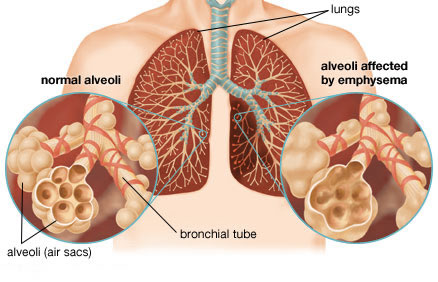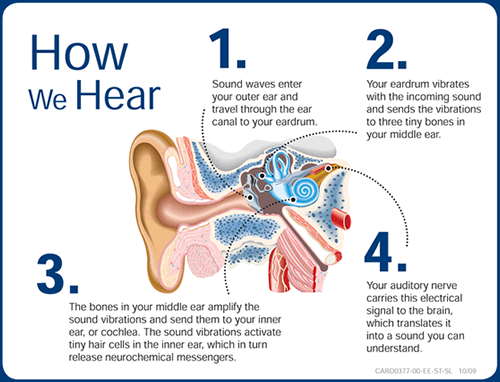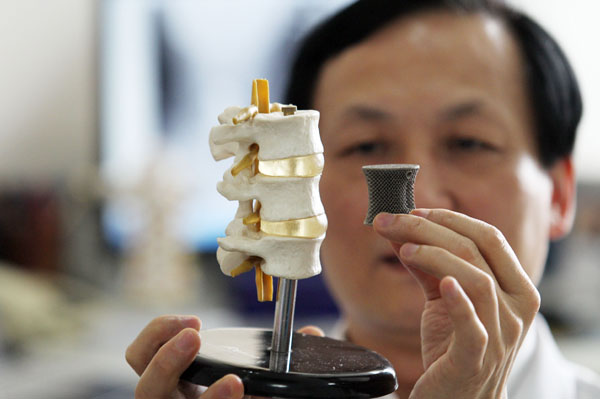UA researchers discover component of cinnamon prevents colorectal cancer in mice

|
Research conducted at the University of Arizona College of Pharmacy and the UA Cancer Center indicates that a compound derived from cinnamon is a potent inhibitor of colorectal cancer.
Georg Wondrak, Ph.D., associate professor, and Donna Zhang, Ph.D., professor, both of the UA College of Pharmacy Department of Pharmacology and Toxicology, recently completed a study in which they proved that adding cinnamaldehyde, the compound that gives cinnamon its distinctive flavor and smell, to the diet of mice protected the mice against colorectal cancer. In response to cinnamaldehyde, the animals’ cells had acquired the ability to protect themselves against exposure to a carcinogen through detoxification and repair.
‘This is a significant finding,’ says Zhang, who, along with Wondrak, is a member of the UA Cancer Center. ‘Because colorectal cancer is aggressive and associated with poor prognoses, there is an urgent need to develop more effective strategies against this disease.’
Large doses of antioxidants may be harmful to neuronal stem cells

|
Stem cells are especially sensitive to oxygen radicals and antioxidants shows new research from the group of Anu Wartiovaara in the Molecular Neurology Research Program of University of Helsinki. The research led by researcher Riikka Martikainen was published in Cell Reports -journal May 28th 2015.
Mitochondria are cellular power plants that use oxygen to produce energy. As a by-product they produce reactive oxygen. Excessive oxygen radicals may cause damage to cells but they are needed in small quantities as important cellular signaling molecules. One of their main functions is to control function of stem cells. Antioxidants are widely used to block the damage caused by reactive oxygen. To enhance their effect some new antioxidants are targeted to accumulate into mitochondria.
The current research showed that a small increase in oxygen radicals did not directly lead to cellular damage but disrupted intracellular signaling in stem cells and lead to decrease in their stemness properties. Treatment with antioxidants was able to improve the stemness properties in these cells. However, surprisingly, the researchers found that an antioxidant targeted to mitochondria showed dose-dependent toxic effects especially on neural stem cells.
As death rates drop, nonfatal diseases and injuries take a bigger toll on health globally

|
People across the world are living longer but spending more time in ill health as rates of nonfatal diseases and injuries - including diabetes and hearing loss - decline more slowly than death rates, according to a new analysis of 301 diseases and injuries in 188 countries.
Using a measurement known as years lived with disability, or YLDs, researchers from around the world quantified the impact of health problems that impair mobility, hearing, or vision, or cause pain in some way but aren’t fatal. In 2013, low back pain and major depressive disorder were among the 10 leading causes of YLDs in every country. Other leading causes globally included neck pain, anxiety disorders, migraine headaches, and diabetes. The leading causes of years lived with disability have remained largely the same during this period, but they are taking an increased toll on health due to population growth and aging.
YLDs per person increased in 139 of 188 countries between 1990 and 2013, meaning that more people are spending more time in poor health. Musculoskeletal disorders, combined with fractures and soft tissue injuries, accounted for one-fifth of YLDs globally in 2013, ranging from 11% in Mali to 30% in South Korea. Mental and substance abuse disorders also caused 20% of YLDs globally, ranging from 15% in Germany to 37% in Qatar.
Drug prevents passage of HBV during pregnancy
|
|
The antiviral drug telbivudine prevents perinatal transmission of hepatitis B virus (HBV), according to a study1 in the June issue of Clinical Gastroenterology and Hepatology, the official clinical practice journal of the American Gastroenterological Association.
“If we are to decrease the global burden of hepatitis B, we need to start by addressing mother-to-infant transmission, which is the primary pathway of HBV infection,” said study author Yuming Wang from Institute for Infectious Diseases, Southwest Hospital, Chongqing, China. “We found that telbivudine not only eliminated vertical transmission of HBV from pregnant women to theirs infants, but that it is also safe and well tolerated by women and infants.”
Researchers performed a prospective study of 450 HBV-positive pregnant women with high viral load, or significant HBV in the blood, during the second or third trimester of pregnancy. Two hundred and seventy nine women received telbivudine (600 mg daily) during weeks 24 through 32 of gestation, and 171 women who were unwilling to take antiviral drugs participated as controls. At six months after birth, none of the infants whose mothers were given telbivudine tested positive for HBV, compared to 14.7 percent of infants in the control group.
Study shows treatment for genetically caused emphysema is effective

|
A landmark clinical study in the Lancet provides convincing evidence that a frequently overlooked therapy for genetically-caused emphysema is effective and slows the progression of lung disease.
Alpha-1 antitrypsin deficiency is an inherited disorder that can cause emphysema even without exposure to tobacco smoke. Alpha-1 antitrypsin (AAT) is a protein made in the liver that protects the lungs. With this disorder, the AAT protein builds up in liver cells and doesn’t reach the lungs to protect them. Augmentation therapy involves regular infusions of purified AAT protein to raise the level of the protein in the blood and lungs. Although the therapy has been available for more than 25 years, it has seen limited use because doctors have been unsure that it works.
The study, “Intravenous augmentation treatment and lung density in severe α1 antitrypsin deficiency (RAPID): a randomised, double-blind, placebo-controlled trail,” published online today will change how clinicians understand this treatment and encourage them to consider its early use before the condition causes severe emphysema.
Hearing impairment higher among Hispanic/Latino men, older individuals

|
Hearing impairment was more prevalent among men and older individuals in a study of U.S. Hispanic/Latino adults, according to a report published online by JAMA Otolaryngology-Head and Neck Surgery.
Hearing impairment is a common chronic condition that affects adults. Hearing impairment may lead to lower quality of life and is associated with an increased risk for dementia. Most hearing impairment is undiagnosed and untreated.
Karen J. Cruickshanks, Ph.D., of the University of Wisconsin, Madison, and co-authors determined the prevalence of hearing impairment among Hispanic/Latino adults from diverse backgrounds and identified the factors associated with hearing impairment.
The authors used data from the Hispanic Community Health Study/Study of Latinos, a population-based sample of Hispanic/Latinos from New York, Chicago, Miami, and San Diego, Calif. The study examined 16,415 self-identified Hispanic/Latino individuals who were between the ages of 18 and 74.
Designing better medical implants

|
Biomedical devices that can be implanted in the body for drug delivery, tissue engineering, or sensing can help improve treatment for many diseases. However, such devices are often susceptible to attack by the immune system, which can render them useless.
A team of MIT researchers has come up with a way to reduce that immune-system rejection. In a study appearing in the May 18 issue of Nature Materials, they found that the geometry of implantable devices has a significant impact on how well the body will tolerate them.
Although the researchers expected that smaller devices might be better able to evade the immune system, they discovered that larger spherical devices are actually better able to maintain their function and avoid scar-tissue buildup.
“We were surprised by how much the size and shape of an implant can affect its triggering of an immune response. What it’s made of is still an important piece of the puzzle, but it turns out if you really want to have the least amount of scar tissue you need to pick the right size and shape,” says Daniel Anderson, the Samuel A. Goldblith Associate Professor in MIT’s Department of Chemical Engineering, a member of MIT’s Koch Institute for Integrative Cancer Research and Institute for Medical Engineering and Science (IMES), and the paper’s senior author.
Single low-magnitude electric pulse successfully fights inflammation

|
The Feinstein Institute for Medical Research, the research arm of the North Shore-LIJ Health System, and SetPoint Medical Inc., a biomedical technology company, today released the results of research on the therapeutic potential of vagus nerve stimulation. In a paper published by Bioelectronic Medicine, Kevin J. Tracey, MD, and his colleagues at the Feinstein Institute, explore how low-level electrical stimulation interacts with the body’s nerves to reduce inflammation, a fundamental goal of bioelectronic medicine.
Prior to this study, it was not understood which vagus nerve fiber types were responsible for reducing the body’s inflammatory activity. The paper’s findings indicate that activation of either motor or sensory vagus nerve bundles can diminish inflammation.
“Identifying the exact role of the different nerve bundles in the inflammatory reflex bolsters our understanding of the relationship between the central nervous system and the vagus nerve,” said Dr. Kevin J. Tracey, president and CEO of the Feinstein Institute. “Furthermore, we now know that stimulating the vagus nerve for as little as half a millisecond is enough to inhibit tumor necrosis factor (TNF) production.”
After establishing the neural bundles activated in vagus nerve stimulation, the researchers found that only low-intensity, short-duration, electric pulses were needed to reduce the production of inflammation-inducing cytokines. Repetition of the pulses did not increase the success of the treatment in this experiment indicating that a single stimulating pulse is potentially sufficient.
Profiling approach to enable right lung cancer treatment match

|
Manchester researchers have tested a new way to genetically profile lung cancer samples, potentially allowing doctors to more easily identify the most appropriate treatment for patients.
Non-small cell lung cancer (NSCLC) represents over 85% of lung cancer cases. The recent introduction of targeted therapies has led to improved patient survival, but only patients whose tumours have a specific genetic change are eligible for such treatments.
Identifying individual patients who may benefit from targeted therapy is becoming an essential part of treatment planning, but many current genetic analysis methods such as next generation sequencing require relatively large amounts of tumour material.
Dr Fiona Blackhall, a senior lecturer in The University of Manchester’s Institute of Cancer Sciences and a consultant based at The Christie NHS Foundation Trust - both part of the Manchester Cancer Research Centre - said: “Unfortunately the biopsy samples we take from these patients are generally quite small. In this study we looked at an alternative genetic screen that utilises a much smaller tissue biopsy to see if it can detect a range of changes in 26 key genes.”
New method enables drug target validation for COPD treatment

|
Together with clinical partners, a team led by Dr. Dr. Melanie Königshoff and the doctoral student Franziska Uhl at the Comprehensive Pneumology Center of Helmholtz Zentrum München have investigated, for the first time, the suitability of Wnt/beta-catenin
activation to initiate repair in patient-derived COPD lung tissue. To achieve this, the researchers used a variety of chemical, biological and imaging techniques.
“In our study we showed that activation of the Wnt / beta-catenin ** - signaling pathway induces lung tissue repair, depending on the patient’s stage of COPD,” said Königshoff. The method developed by her team represents a powerful new tool for pathological assessment, drug validation, and mechanistic studies in patient-derived lung tissue, which will open novel avenues for successful clinical translation and precision medicine.
New method represents important advancement
“Previously, studies largely relied on animal models, and cell cultures in the petri dish were limited to two dimensions and individual time points,” said Uhl.
Can cheap wine taste great? Brain imaging and marketing placebo effects

|
When consumers taste cheap wine and rate it highly because they believe it is expensive, is it because prejudice has blinded them to the actual taste, or has prejudice actually changed their brain function, causing them to experience the cheap wine in the same physical way as the expensive wine? Research in the Journal of Marketing Research has shown that preconceived beliefs may create a placebo effect so strong that the actual chemistry of the brain changes.
“Studies have shown that people enjoy identical products such as wine or chocolate more if they have a higher price tag,” write authors Hilke Plassmann (INSEAD) and Bernd Weber (University of Bonn). “However, almost no research has examined the neural and psychological processes required for such marketing placebo effects to occur.”
Participants in one of the studies were told they would consume five wines ($90, $45, $35, $10, $5) while their brains were scanned using an MRI. In reality, subjects consumed only three different wines with two different prices. Another experiment used labels to generate positive (“organic”) or negative (“light”) expectations of the pleasantness of a milkshake. Some consumed identical milkshakes but thought they would be either organic or regular; others consumed identical milkshakes but thought they would be either light or regular.
Baclofen shows promise in patients with alcohol-induced liver disease

|
Results revealed today at The International Liver Congress™ 2015, show that in patients with alcohol-induced liver disease (ALD), Baclofen has a positive impact on alcohol consumption and overall measures of liver function and harm.
ALD is a major cause of alcohol-related mortality and helping patients with ALD to stop drinking is a primary goal of treatment. The primary aim of this study was to measure the effectiveness and tolerability of Baclofen in maintaining abstinence in this difficult to treat group, and to determine if this resulted in a reduction in standard measures of liver damage.
The results show promising outcomes for these patients, helping them to reduce their alcohol consumption as well as improving overall indicators of liver function and lowering physical dependence. A randomised controlled trial is now needed to confirm the benefit of Baclofen in this patient group.
###
About The International Liver Congress
This annual congress is the biggest event in the EASL calendar, attracting scientific and medical experts from around the world to learn about the latest in liver research.
Many European countries ill-prepared to prevent and control the spread of viral hepatitis

|
Many countries in the World Health Organization (WHO) European Region are facing limitations in conducting chronic viral hepatitis disease surveillance, assessing the burden of disease and measuring the impact of interventions, according to results revealed today at The International Liver Congress™ 2015.
The study highlights that less than one-third (27%) of WHO European Member States have national strategies in place that contain a surveillance component. Furthermore, only 64% have a national surveillance system for chronic hepatitis B and 61% for chronic hepatitis C.
The study also reveals the main areas in which governments would like the WHO’s support:
Development of national plans for viral hepatitis prevention and control (39%)
Estimation of the national burden of viral hepatitis (34%)
Surveillance (23%)
What’s the life expectancy of patients when they begin treatment for osteoporosis?

|
Despite reports that people with osteoporosis have an increased risk of dying prematurely, a new study has found that life expectancy of newly diagnosed and treated osteoporosis patients is in excess of 15 years in women below the age of 75 and in men below the age of 60.
In more detailed analyses, the residual life expectancy after beginning osteoporosis treatment was estimated to be 18.2 years in a 50-year-old man and 7.5 years in a 75-year old man. Estimates in women were 26.4 years and 13.5 years. The Journal of Bone and Mineral Research study included 58,637 patients with osteoporosis and 225,084 age- and gender-matched controls. Information on deaths until the end of 2013 was retrieved, providing a follow-up period of 10 to 17 years.
Addressing the needs of young women with disorders of sex development

|
Disorders of sex development are lifelong conditions that are usually diagnosed at birth or during adolescence. In a recent study of 13 teenaged girls with disorders of sex development, the girls were guarded and reticent about sharing personal information about their disorder during adolescence, but some of them learned to engage in conversations with more confidence as they moved towards adulthood.
The participants noted that frustrations about their bodily differences and the limitations of their bodies limited physical spontaneity, impacted on their perceived sexual fulfillment, and hindered friendships or the possible formation of intimate partnerships. The young women wanted empathic, sensitive support from knowledgeable health professionals to help them understand their bodies.





